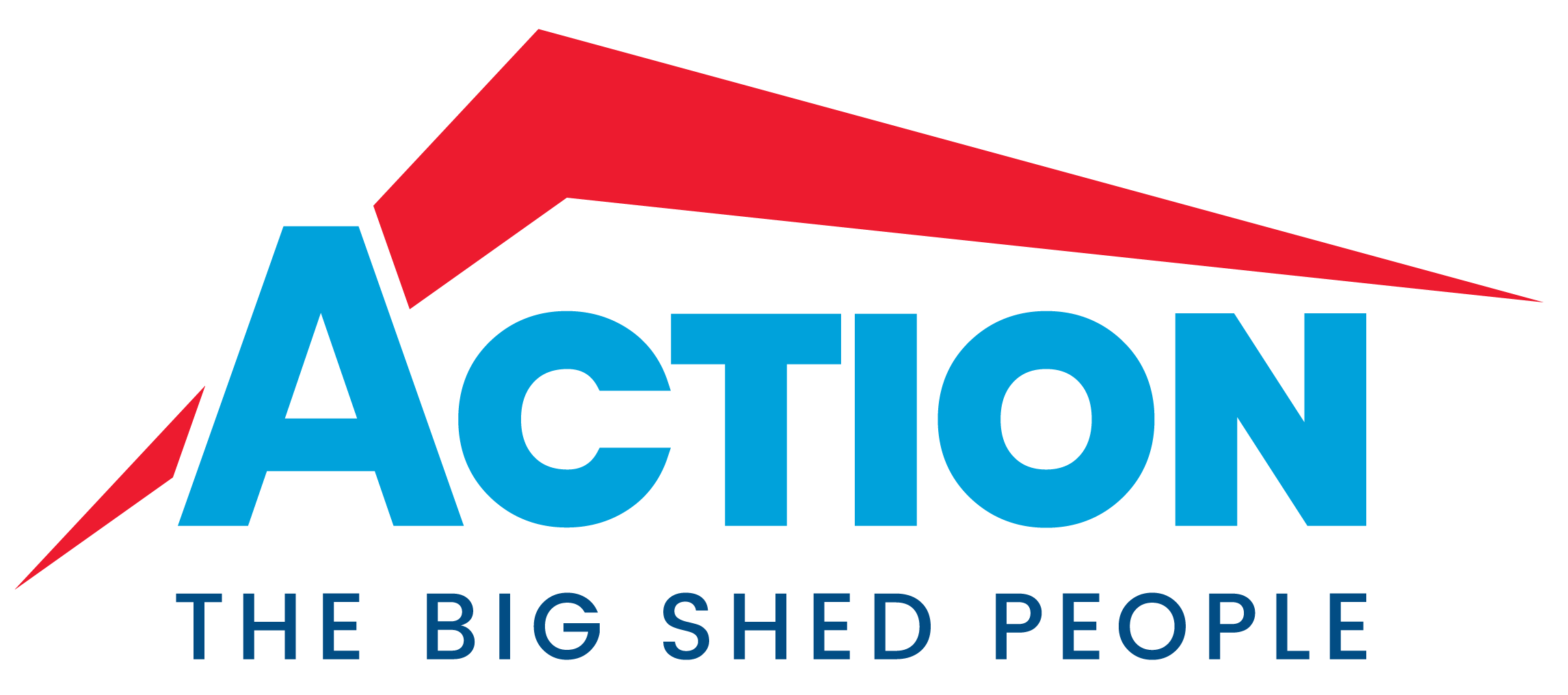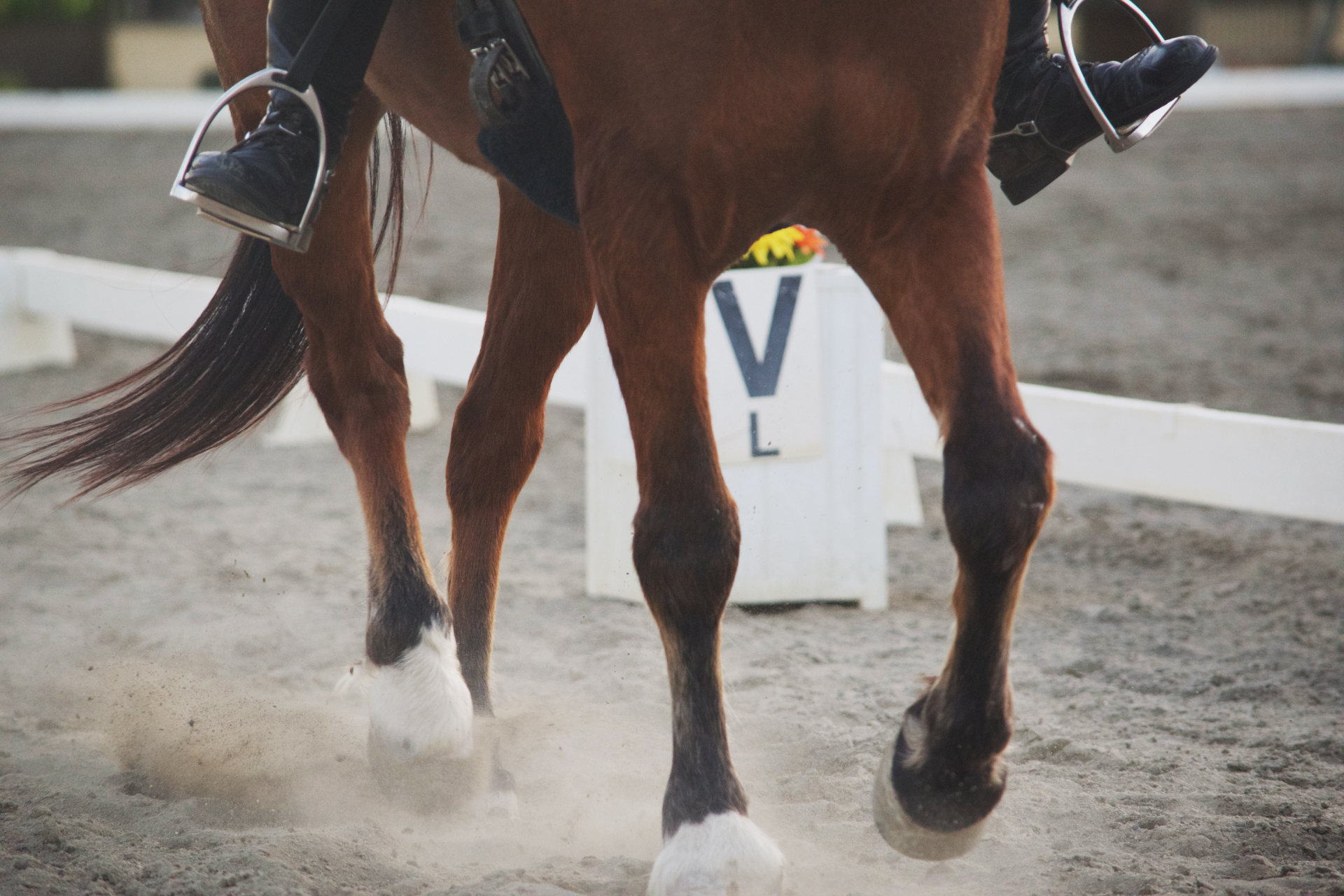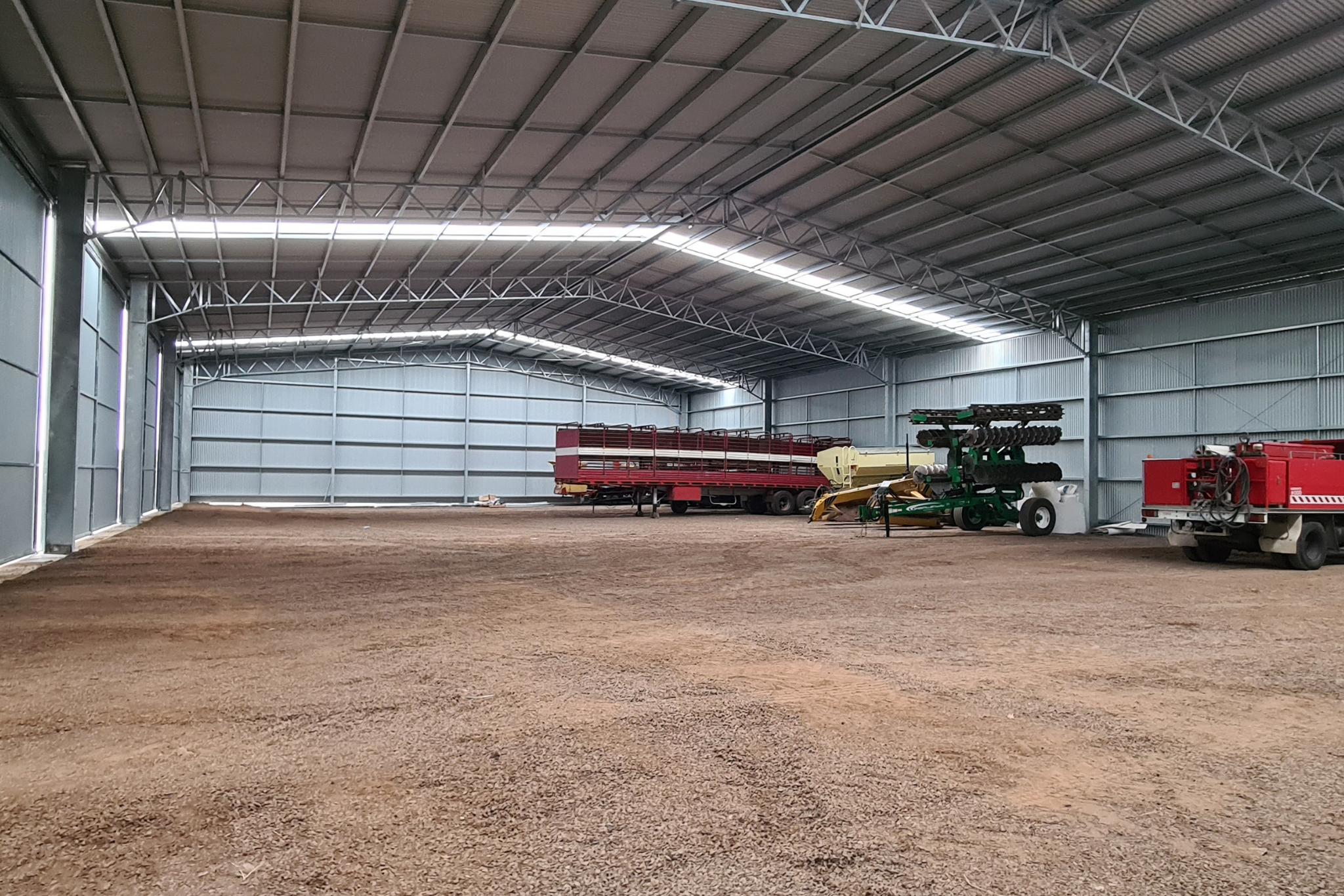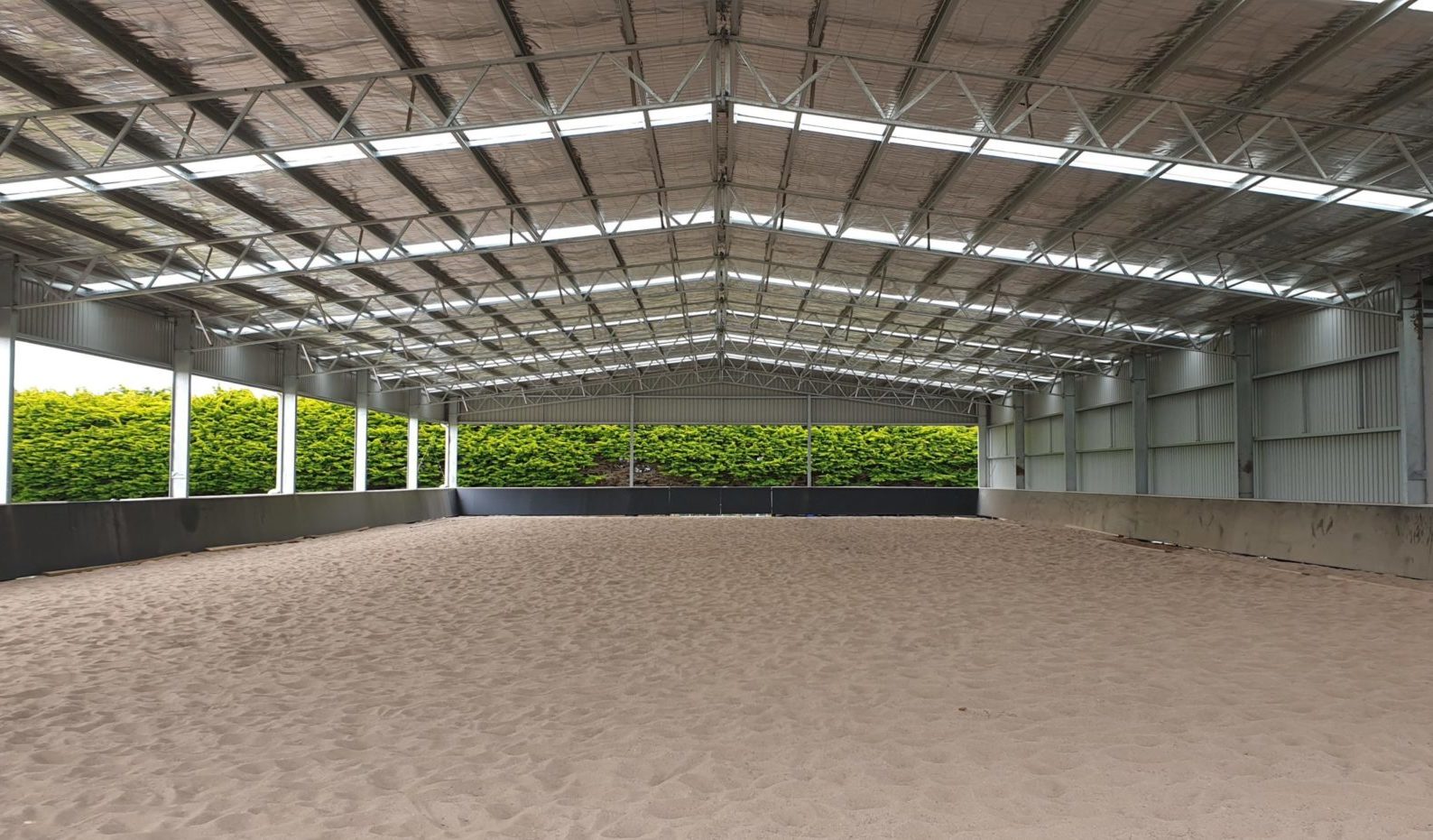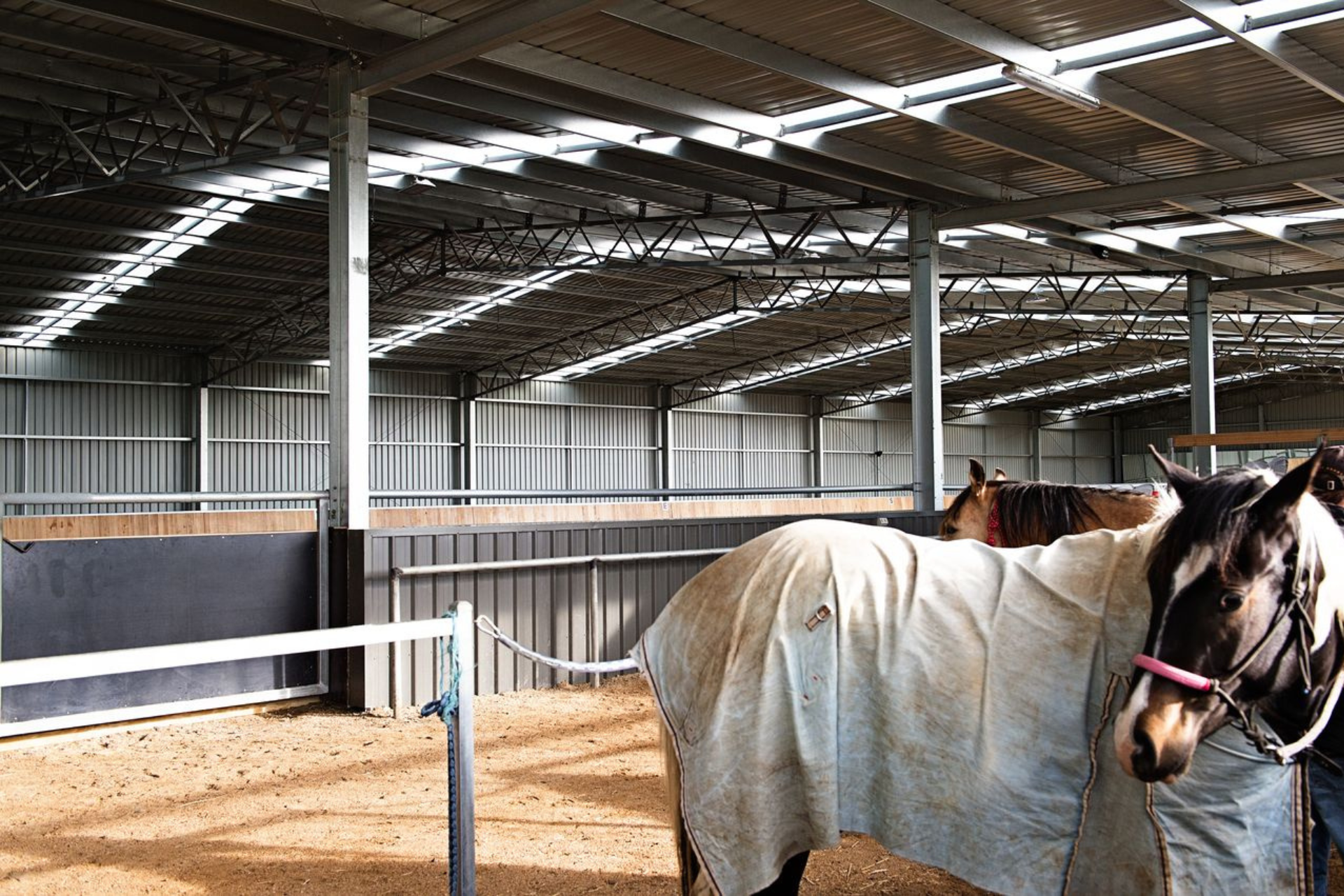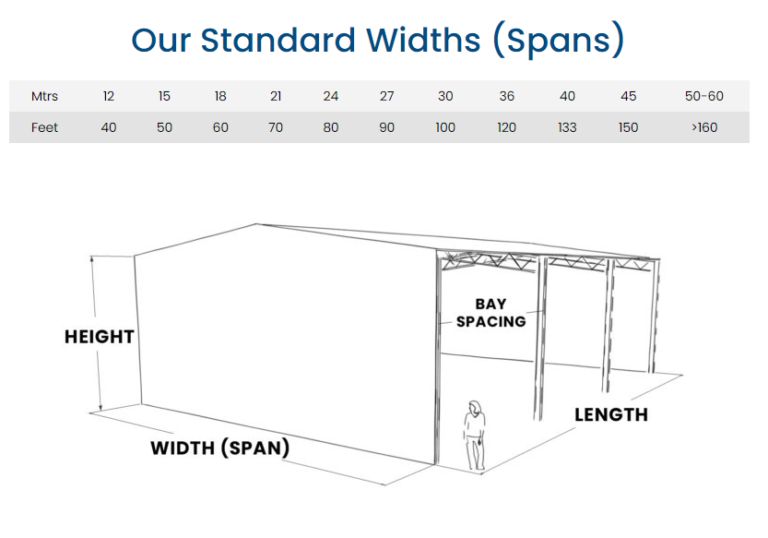How much does it cost to build a horse yard cover? What is a cost-effective design? How can I save money on my project?
There’s no denying that the idea of covered yards is incredibly attractive!
Working with your horses out of the rain? Check.
Working with your horses out of the sun? Check.
Being able to work with your horses at any time of the day, year-round? Check.
If you are looking to turn this idea into reality, you might be wondering whether this project will fit your budget.
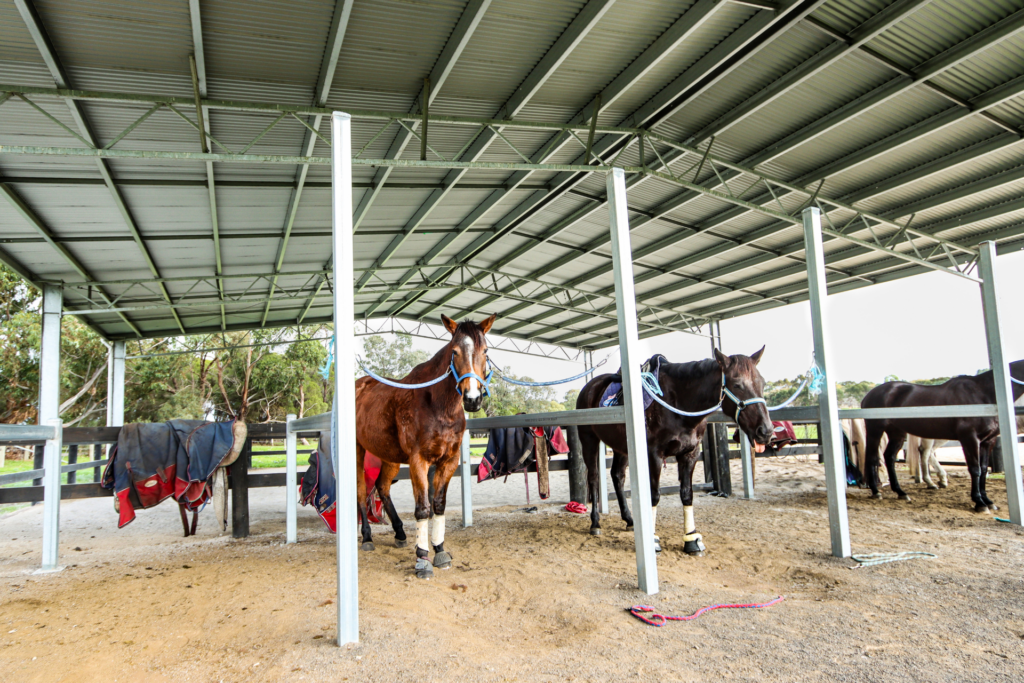
In this price guide, we discuss the cost to build a horse yard cover, including the factors that influence price and ways that you can create a cost-effective horse yard cover design.
We trust this is a helpful discussion!
How Much Does It Cost To Build A Horse Yard Cover?
The average cost to build a horse yard cover is approx. $70,000 including GST, footings and installation.
This does cover a range of sizes and designs though, so the list below will give you a better idea of how much your project might cost and shows how prices can vary.
Horse Yard Cover Sizes & Price List
Below we have listed some of the most popular horse yard cover sizes – and provided an approximate price guide for each. We hope this helps you with your project budgeting.
- An 18m (L) x 18m (W) x 4.5m (H) horse yard cover costs approx. $45,000 – $65,000. This is popular option for a round yard cover.
- A 32m (L) x 18m (W) x 5.25m (H) horse yard cover costs approx. $75,000 – $95,000.
- A 40m (L) x 21m (W) x 6m (H) horse yard cover costs approx. $110,000 – $130,000.
Or if you are considering a full dressage arena cover, a popular size is 64m (L) x 21m (W) x 5.25m (H) which costs approx. $165,000 – $185,000.
These prices include GST, footings and installation and are for a roof-only configuration. Please note they are indicative prices only.
4 Factors That Influence Project Costs
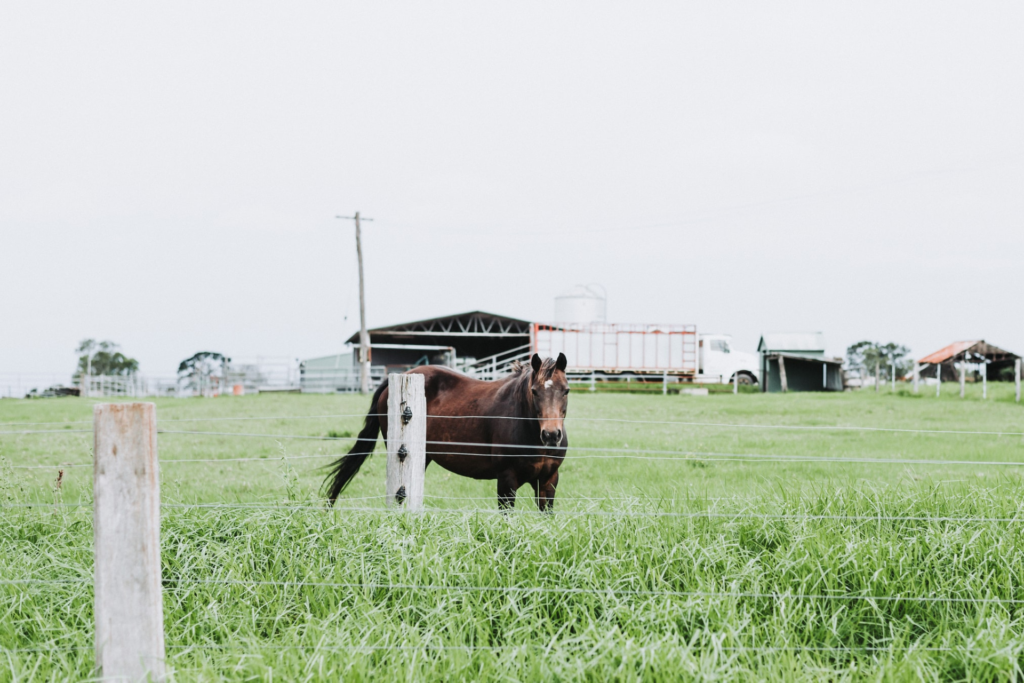
1
Horse Yard Cover Size
The size of your new horse yard cover will directly impact the cost of the project, simply because the bigger the cover, the more materials and labour are required.
And vice-versa.
It is important not to skimp on size though, particularly clearance height.
2
Yard Cover Configuration
When it comes to farm shed projects, horse yard covers included, some configurations are more cost-effective than others.
There are two main configuration details to consider that will influence the cost.
The first is length versus width.
Typically, a long and narrow configuration costs less than a wider, shorter configuration.
The amount of walls included in your configuration will also determine the price. A roof-only configuration is most common for a horse yard cover as it provides easy access and airflow – it is also the most cost-effective option too.
When it comes to configuration it is important to choose the option that works for you.
For example, if your site is exposed to the prevailing weather you could consider installing gable infills to achieve better weather protection. This will add to the installation costs and material costs (which we discuss next) but it could help you avoid a dysfunctional design.
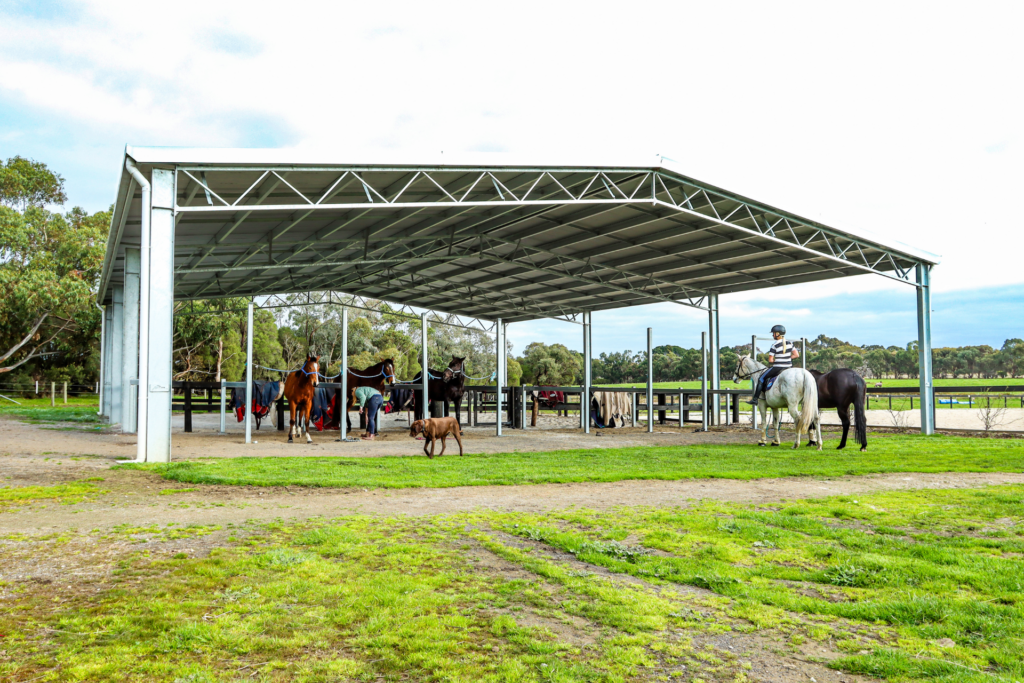
3
Materials
Materials for your horse yard cover are one of the main project cost contributors.
This includes the cost of the structural steel, the cost of the shed cladding and the cost of corrosion protection.
We pride ourselves in using Australian-made steel and steel products and the best corrosion protection available – and as the saying goes: you get what you pay for.
When it comes to structural steel, our sheds are manufactured from Australian-made steel including heavy-duty UB columns and open web trusses.
While steel prices are lower post-Covid, Australian-made steel typically costs more than imported steel. Learn about 2024 steel prices – here.
Similarly, the cladding on our shed builds is also Australian-made.
The three cladding options we offer are zinc cladding, galvanised cladding and Colorbond cladding. Zinc cladding is the most cost-effective and is used for most of the farm sheds we build.
The third material cost to keep in mind is hot-dip galvanizing.
While hot dip galvanising is by far the most effective steel coating, it is also the most expensive, having a much higher initial cost compared to alternatives like paint or pre-galvanizing.
Having said that, hot dip galvanising has the lowest long-term cost. And we don’t recommend compromising on corrosion protection!
You can learn all about hot dip galvanising in the video below.
4
Site Conditions
The fourth project cost factor to consider may not apply to your project, but it pays to keep it in mind.
A site that is poorly prepared or doesn’t have easy machinery access can cause installation delays or increase installation costs.
You can learn more about site preparation and why it is important in the video below.
Now that we have an understanding of the main factors that contribute to the cost to build a horse yard cover, you might be wondering – how can I save money on my project?
When it comes to cost savings on shed projects, it is important to do it in a way that doesn’t sacrifice either quality or functionality.
So, below we discuss ways you could achieve this on your horse yard cover project.
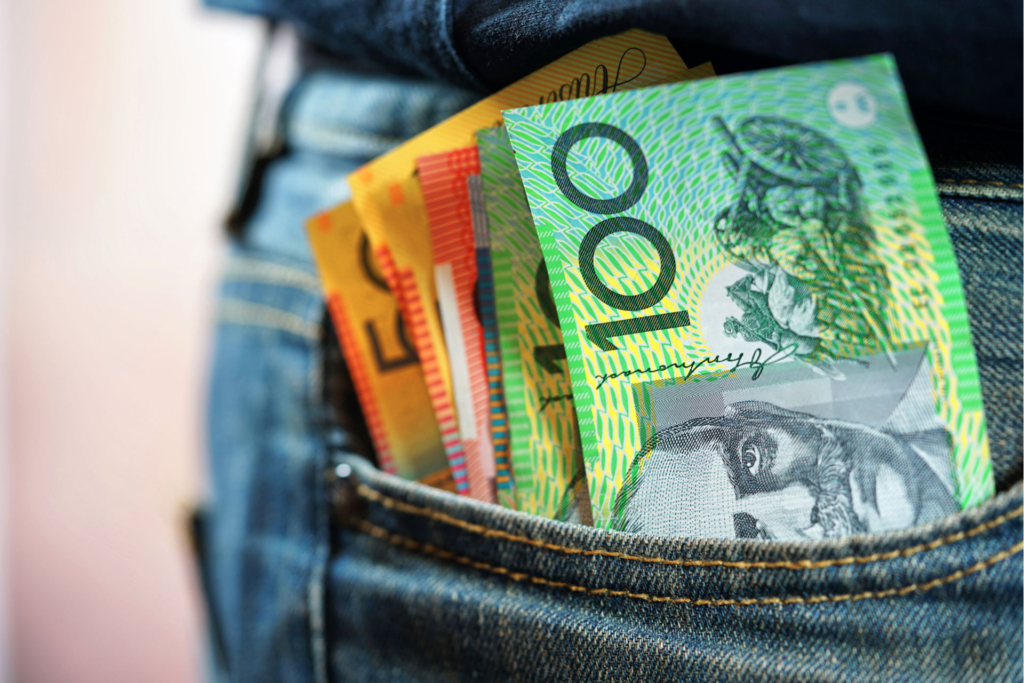
How To Create A Cost-Effective Horse Yard Cover Design
The second way is a recommendation we make for most farm shed projects – choose a standard span size.
Some span sizes are more cost-effective than others. This is because we work with a range of standard-size spans that are both practical and cost-effective.
Choosing a standard size span for your shed can provide a cost saving as a truss jig does not have to be set up specifically for your project. This saves both time and money in the drafting and manufacturing stages.
You can learn more about the standard span range, here – What Are The Standard Spans For Farm Sheds?
That’s a wrap on our discussion around the cost to build a horse yard cover!
We have listed some additional resources below which might be helpful for your project planning.
